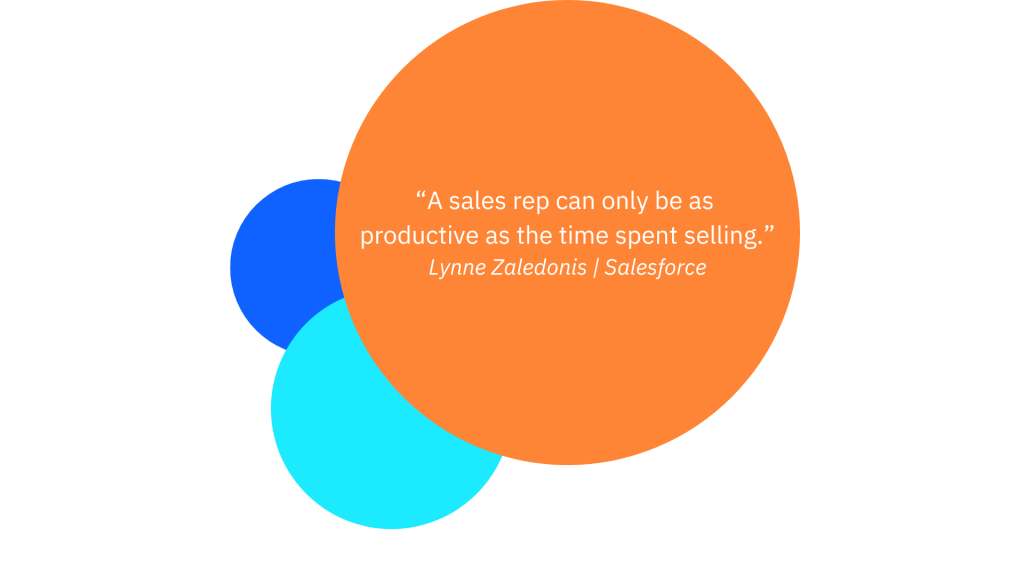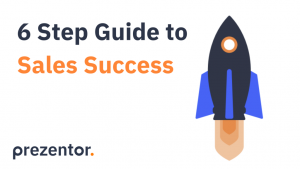How to automate manual sales tasks
CRM entries, prospects research, meeting preparations, follow-up emails, and other similar, boring tasks are, unfortunately, a necessary part of a seller’s job. A study by Xant found that sales reps only spend 35% of their time on selling-related activities. Yet, no seller ever enjoys performing manual and repetitive tasks.

But what if they didn’t need to? That’s right, there is someone else – or rather something else – that can do it for them. No, we are not suggesting enslaving some poor intern to do all the dirty work for you – we are talking about sales automation, of course!
In this article, we will explain which sales tasks can be automated, how to implement sales automation, and the many benefits that this brings for sellers and the whole organization.
What are the benefits of sales automation?
No need to worry – sales automation is not here to steal sellers’ jobs. It is rather a helpful assistant that can make their work life much easier. The benefits of sales automation are numerous. McKinsey reports that early adopters of sales automation show “increases in customer-facing time, higher customer satisfaction, efficiency improvements of 10 to 15 percent, and sales uplift potential of up to 10 percent”.
Below we list just a few of the advantages of automating manual sales tasks.
Increased efficiency and productivity. Cutting the time spent on admin tasks means more time for sellers to focus on their selling skills and close more deals!
Better customer experience. Automating manual tasks creates a smooth and streamlined process, speeds up sellers’ response times, and keeps customers’ data always synced and updated, which creates a more efficient and overall better experience for your customers.
Shorter sales cycle. Automated messaging, pre-built templates, automated quote generation, and similar speed up and increase the efficiency of communication between sellers and prospects, thus shortening the sales cycle.
Better insights. Sales automation software can give insights into prospects’ behavior, telling the sellers which prospects are more likely to convert and should therefore be prioritized. This also contributes to a shorter sales cycle, as sellers focus their time and effort on prospects who are more likely to move quickly through the sales funnel.
Improved data quality and accessibility. Automating data recording eliminates the risk of human error and keeps data organized, up-to-date, and easily accessible by all sellers whenever needed.
Who should be in charge of implementing sales automation?
Whether you hire a dedicated team to implement and manage sales automation or decide to assign the task to the Sales Operations, Sales Management, or Sales Enablement teams, it needs to be a joint effort that involves at least the following teams:
- Sales
- Sales Ops
- Sales Enablement
It is important to work closely with all relevant stakeholders during the automation process. Not only will this ensure transparent communication, greater adoption, and a smoother transition to the new way of working, but their inputs and viewpoints can also be very useful in defining the best implementation plan.
What parts of the sales process can you automate?
Before looking at how to implement sales automation, you need to have an idea of what tasks you can and want to automate.
According to McKinsey, about a third of all sales tasks can be automated – however, very few companies are exploiting this great potential.
Listed below are some examples of sales tasks that can be easily automated with today’s technology.
Lead generation
Automatic collection of data from users interacting with your website and social media platforms generates leads that have already come across your brand and are likely in the market to buy what you are selling. The use of AI and chatbots can be a good way not only to help visitors navigate your website and quickly find what they need, but also to understand their reason for visiting the website, gauge their intent to purchase and initiate a relationship with potential clients.
Prospecting
Use automatic outreach to get in touch with leads who have expressed interest in purchasing your solution but might be stuck in the sales funnel. If you are being ghosted by one of your prospects, it might not do much good to keep sending the same email over and over again. Prepare instead a series of email templates in advance, populate them with content targeted to your prospects’ needs, and schedule them to be sent at pre-defined time intervals. This is a good way to keep your brand fresh in your prospects’ mind without coming across as too ‘pushy’, so when they are ready to make a purchase, they will likely think of you!
Data recording
CRM adoption still presents challenges for many companies, due to old or incomplete data and a lot of manual work involved. But with the right tools, you can automatically collect customers’ data directly into your CRM software. This eliminates errors and duplicate data, saves sellers a lot of time and boring manual work, and keeps the data always updated with every customer interaction and always accessible by all sellers.
Reporting
With sales automation you get consistent and accurate reporting – based on real data – with zero effort. Most sales platforms gather data from all sellers and all customers in the company all in one place, so management can get a performance overview at a glance and be able to make data-driven decisions in no time.
Planning and forecasting
No more complicated spreadsheets, extensive research, and manual comparison of data. Nowadays, sales software with AI can make accurate sales predictions by analyzing data both from the company and the wider market.
Post-sales follow-ups
Automation doesn’t end when the deal is closed. There are many more follow-up processes that can be efficiently automated – from the immediate post-sale invoices and product activation emails to up-selling and cross-selling recommendations, auto-renewal of contracts, and monitoring of health scores to prevent customers’ churn.
How to implement sales automation.
How to automate manual sales tasks will mostly depend on the specific setup of your organization and on the technology already available to you (or the budget that can be spent on new technology). As a general guidance, a sales automation implementation plan consists of three phases.
- Identify what can be automated.
The first step is to analyze the way your revenue teams work and identify all the manual, time-consuming, repetitive tasks that could be automated. Work closely with your sellers and get their input on ideas that could help them with their daily challenges and boost their productivity.
- Assess current tech-stack.
Take stock of the technology you already have at your disposal. Are you exploiting its full potential? Maybe your current software already enables you to automate some of those tasks you have shortlisted in phase 1. As for processes that require the purchase of new automation solutions, make sure you do your research and invest in software that integrates well with what you already have.
- Test before full roll-out.
Sales automation can require a big change in the way your teams have been working so far. Therefore, it can require a few trials and errors before you get it right. Start small and test the new strategy with a few selected individuals or teams. Analyze their results, collect their feedback, and improve and adjust wherever necessary, before rolling out fully in the entire organization.
Final thoughts.
Sales automation has become more and more of a must for all those companies who want to stay competitive and maximize the efficiency of their sales force in today’s challenging economy. It may require time and effort to change the way your organization works at first, but the benefits reported by adopters are undeniable and make the transition worthwhile.
For more tips on how to win deals predictably and consistently, download our 6-Step Guide to Sales Success in 2023.



